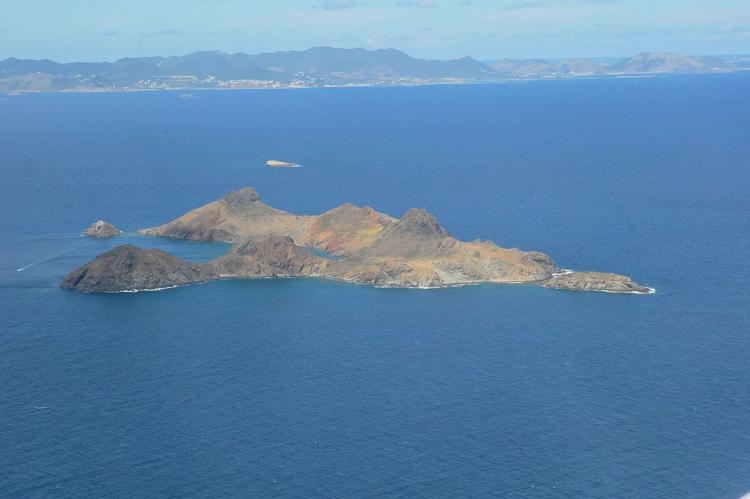Saint Barthélemy Nature Reserve: A Jewel of Marine Conservation
The Nature Reserve of Saint Barthélemy is a testament to the island's commitment to preserving its rich underwater ecosystems and diverse marine life. This reserve, encompassing five distinct sectors, plays a crucial role in conserving coral reefs, seagrass beds, and many marine species.
The Nature Reserve of Saint Barthélemy: A Sanctuary of Caribbean Marine and Avian Biodiversity
The Nature Reserve of Saint Barthélemy, established in 1996, is a testament to the island's commitment to preserving its rich underwater ecosystems and diverse marine life. This reserve, encompassing 1,200 hectares (2,965 acres) in five distinct sectors, plays a crucial role in the conservation of coral reefs, seagrass beds, and a plethora of marine species. Located in the Caribbean Sea, Saint Barthélemy, or St. Barts, is an overseas collectivity of France renowned for its volcanic origins and encircling shallow reefs.
Geographic and Ecological Overview: Location and Terrain
Saint Barthélemy is a volcanic island about 35 kilometers (22 miles) southeast of Sint Maarten and 50 kilometers (31 miles) northeast of Saba, Sint Eustatius, and Saint Kitts & Nevis. The island's rugged terrain and surrounding shallow reefs create a unique environment supporting diverse marine life.
Sectors of the Nature Reserve
The Nature Reserve of Saint Barthélemy is divided into five sectors, each with its distinct characteristics and ecological significance:
- Gros Îlets and Pain de Sucre: Located off Gustavia Harbor, these areas are known for their rich coral formations and vibrant marine life.
- Île Fourchue: This sector is a haven for marine species and is popular among divers for its underwater beauty.
- Île Frégate: Known for its pristine waters and diverse ecosystems.
- Île Toc Vers: A crucial area for coral and marine life conservation.
- Colombier Bay: A picturesque bay that forms an integral part of the reserve.
Marine Biodiversity: Coral Reefs and Seagrass Beds
The reserve is home to coral formations covering over 275 hectares (680 acres). These coral reefs and extensive seagrass beds provide critical habitats for numerous marine species. The diversity of the coral species is impressive, with 45 recorded species contributing to the vibrant underwater ecosystem.
Marine Fauna
The marine life in the Nature Reserve is incredibly diverse. In addition to ascidiacea, sea sponges, and anemones, the waters host sea urchins, starfish, shellfish, crustaceans, and a few species of sea turtles. The reserve is also home to 165 fish species, showcasing the rich biodiversity of the Caribbean marine environment.
Invasive Species: The Lionfish
Despite its rich biodiversity, the Nature Reserve faces challenges from invasive species such as the poisonous lionfish. Known for its dangerous bite, the lionfish poses a significant threat to the native marine species and the overall health of the reef ecosystems.
Avian Biodiversity: Bird Species
The Nature Reserve of Saint Barthélemy is also a sanctuary for avian species, with 80 recorded bird species inhabiting the area. The island's land area, though small, supports xerophytic vegetation that provides nesting grounds for various terrestrial birds. However, goat grazing has led to the loss of nesting grounds for some species.
Migratory Birds
During winter, the bird population significantly increases as Neotropical migrant birds flock to the reserve. Notable bird species in the area include the brown booby (Sula leucogaster), laughing gull (Leucophaeus atricilla), royal tern (Thalasseus maximus), and common tern (Sterna hirundo).
Water Birds
The island's ponds provide habitats for six species of water birds, adding to the reserve's biodiversity. These birds utilize the ponds for feeding and nesting, contributing to the area's ecological complexity.
Conservation and Management: The Grenat Association
The Grenat Association oversees the management of the Nature Reserve of Saint Barthélemy. This organization implements conservation strategies and protects the reserve's ecosystems. The reserve's boundaries are marked on nautical charts to aid its protection and management.
Conservation Efforts
Efforts to conserve the Nature Reserve's biodiversity include monitoring the health of coral reefs and seagrass beds, controlling invasive species like the lionfish, and protecting the habitats of marine and avian species. Education and outreach programs are also vital components of the reserve's conservation strategy, aimed at raising awareness about the importance of marine and avian biodiversity.
Conclusion
The Nature Reserve of Saint Barthélemy stands as a crucial bastion for marine and avian conservation in the Caribbean. Its diverse ecosystems, ranging from vibrant coral reefs to critical bird habitats, highlight the importance of preserving such natural treasures. The ongoing efforts by the Grenat Association and other conservation bodies ensure that this reserve remains a sanctuary for future generations to appreciate and protect. Through continuous conservation and sustainable management practices, the Nature Reserve of Saint Barthélemy exemplifies the harmony between natural preservation and human interaction, ensuring the resilience and beauty of this Caribbean jewel for years to come.
